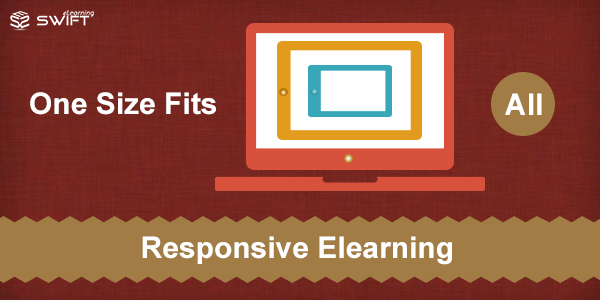Creating Receptive ELearning Courses Is a Necessity
Creating Receptive ELearning Courses
If eLearning courses have to serve the precise purpose of their creation, the courses must be created by taking into account the pragmatic reality and by using the appropriate authoring tools. The application of responsive e-Learning designs is essential here. Only when these points are taken care of in a well-structured manner, the related bespoke eLearning courses will become adaptable, thus making the online participants on the ball. The participants must become clued-up, as far as the discussed topics are concerned.
However, for phasing in this possibility, the instructional designers must take due care while designing the e-Learning courses. They must make use of all the available resources including the application of the best authoring tools to develop responsive e-Learning designs. They must also make sure that the created e-Learning courses are amenable and tractable. E-Learning courses must be always created by taking into account the perspective of an online learner. The participants must be able to grasp the gist of the subject with ease. Moreover, the content must be created by considering the pragmatic situation.
Responsive Web Design (RWD)
The time when almost all business organizations were having two forms of websites (one for the desktop and the other one designed for the mobile gadgets) has changed. As the market is overloaded with diverse models of smart phones such as tablets and iPhones, companies will have to shell out a lot of money to create and maintain different types of websites that will go well with each of such devices and the same is not viable. This is the base reason why the notion of ‘Responsive Web Design (RWD)’ cropped up.
The Evolution of Responsive ELearning Design
It was Ethan Marcotte who created the phrase ‘Responsive Web Design’ and that was way back in the year of 2010. The ‘Net Magazine’ projected RWD as one of the topmost designing priorities in 2012 and soon after that, in 2013, ‘Mashable’ declared that RWD will be in ‘full swing’ sooner than 2013. All these predictions and calculations have become true, because, desktops and laptops have become nearly outdated these days and varied types of smart phones have taken their places. Desktops and laptops have become merely an ‘in-office’ item! The need for implementing ‘Responsive Web Design’ is all the more a necessity in the changed scenario. Only when the website is responsive and easily accessible and navigable, customers will prefer to visit the site. Hence, instructional designers must take this matter into account while creating online modules for e-Learning courses.
The Necessity for Creating Responsive E-Learning Design
The key objective of e-Learning courses is to make the participants absolutely aware of the topics discussed. Many of the present generation populace will be using such online study and training programs while on the go or precisely while attending their professional tasks. Hence, instructional designers will have to make use of responsive elearning designs to deliver effective e-Learning programs.
Responsive E-Learning Design is a Necessity These Days
Instructional Designers should consider certain points before moving on to the task designing e-Learning contents.
- They have to ensure that the design which they are trying to implement can be easily accessed through all mobile platforms.
- The ‘Learning Management System (LMS)’ which the instructional designers use must be mobile friendly. Thus they can make the connected e-Learning courses popular, which will bring in more clients.
- They must have deep acumen regarding the topic of e-Learning and the most modern e-Learning designs, particularly about the responsive e-Learning designs. They must also have a solid view regarding the course duration and must form the modules accordingly.
- They must pick the authoring tools such as ‘Articulate Storyline’, ‘Lectora’, ‘Articulate Studio’, and ‘Captivate’, etc. meticulously.
- The e-Learning creation should be done in a bespoke manner, so that it matches the actual requirement.
- It is always advisable to give a synopsis of the course as a separate module.
Our Services: Translation Service Providers, eLearning Content Development, Convert Flash to HTML5


Leave a Reply
Want to join the discussion?Feel free to contribute!